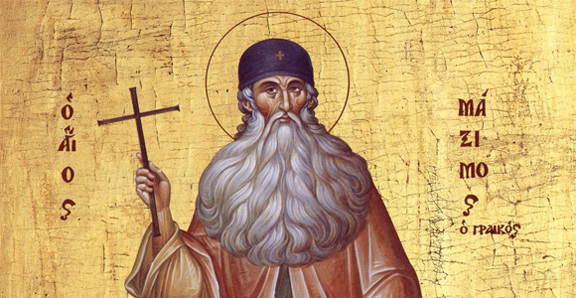Conservative Protestants are not alone in their conviction that gender is something God created and is part of His ultimate design. Both the Eastern Orthodox and Roman Catholic traditions uphold the church’s historical interpretation of gender. Philip Mamalakis, professor at Holy Cross School of Theology in Brookline, Massachusetts, presents his understanding of the Orthodox view of gender in the following excerpts from his 2012 lecture (for the full audio lecture and transcript, click here):
—–
“Gender as Icon and Vocation”
It is clear in Genesis that God created male and female. There are two distinct genders. Any confusion of this distinction between the two would undermine that truth that’s revealed to us. What is less clear, apart from the biological distinctions, is what it means to be a man and what it means to be a woman. On the surface, it’s hard to argue the fact that boys and girls are different. That seems simple enough, and many parents notice when they have sons and daughters that boys are different [from] girls.
In my family, we had four daughters, and then we had three boys. So we have accumulated a long list of what we call “things our daughters never did,” including, but not limited to: how they interact, how they play, how they fight, how they break things… In fact, I know therapists who promote the idea that gender is just a social construct that limits children—until they have their own children, and their boys wrestle and demand trucks, and their daughters prefer to play quietly with dolls.
Trying to construct some sort of neutral gender-norms doesn’t work. It doesn’t match with the reality we see. However, trying to define what it means to be male and female is not so simple. There’s a danger in drawing too hard and fast a distinction or a separation between the two genders, because if we look closely at the genders and gender roles, the distinctions don’t hold up so tightly. Many of our gender-norms are cultural, and they vary between cultures. That is to say, any way we try and define what it means to be a man or a male and what it means to be a female seems to fall short of describing what we really see.
We may say things like, “Boys are strong, aggressive, and courageous, and girls are passive and gentle and sensitive,” right? Yet anyone who’s married knows that aggression and passivity don’t make for a good marriage, and in fact in order to have a successful marriage, men need to be gentle and sensitive, and women need to also be strong and courageous. Parents also know that not all boys are alike and not all girls are alike. I have a beautiful niece the same age as my boys who plays much more like a boy than like a girl. She likes to play aggressively. She loves to wrestle and is very physical. And parents report to me that they have sons who don’t play like normal boys. They might be more gentle, less aggressive.
So it seems as though masculine and feminine are not so clearly two separate things, but they seem to exist in men and in women, in both genders. In fact, the first human was created male and female in Genesis 1:27, and according to St. Ephrem the Syrian, Eve was already inside of Adam. The first person was separated into man and woman. In the second chapter of Genesis, woman was taken out of man, and when Adam saw Eve, he recognized her as similar to himself: “This is now bone of my bone and flesh of my flesh.” In fact, men and women share the same human nature. Each of us as male and female came from the union of a man and a woman. We see aspects of masculine and feminine in both sexes. Each of us, male and female, is in the image of God, and each male and female is considered an icon of Christ. Christ was a man, yet he saved all of humanity, men and women, by taking on human nature as a male.
When we look at the models of Christian life, men and women saints, sharp gender distinctions and gender roles don’t hold up so tightly either. It seems as though in our tradition men and women share the same spiritual nature. We don’t have “men’s spirituality” and “women’s spirituality.” We share the same path to salvation. The fruits of the Spirit, which we are all called to acquire, they show no gender distinction. Exhortations for holiness and acquiring the virtues are the same for men and for women.
In fact, St. Maximus the Confessor refers to the masculine and feminine powers of the soul within each one of us. The irascible passions, or the drive, are considered male, while the appetitive or concupiscent passions of desire are considered female. In Greek, the word for anger is a masculine noun, and the word for desire is a feminine noun. St. Maximus the Confessor interprets St. Paul’s statement that “in heaven there is no male or female” to mean that there is no anger or desire. St. John Chrysostom writes, “The wrestlings are varied, but the crown is one. The contests are manifold; the prize is the same,” when speaking about the salvation ofboth genders. “Here, since the contest is wholly concerning the soul, the lists are open to each sex.”
What do we see in the Lives of the saints? Well, we see all the virtues in both genders. We see strong, courageous, gentle, and sensitive men and women, Christ-like servants who are very clearly male and female, but who don’t fit into narrow stereotypes of gender. But there’s no gender confusion, either. Christ himself, a real man, revealed to us that to be king of the universe meant to get down on your knees and wash the feet of his disciples, and ultimately, to suffer being mocked and crucified, laying down his life. And the mother of God, a real woman, we call the champion general. In fact, do you know who the patron saint of the all-male peninsula of Mount Athos is? A female. She’s in charge!
So we see in the saints both men and women have the same masculine and feminine attributes and virtues, in harmony, within men and women. In fact, often when you see a happily married older couple, rather than clear gender stereotypes, you will often witness a mutual care and a mutual service and deferring to each other. Now, does this mean that I’m blurring the distinctions between male and female? Well, no. It just means this is the reality that we see, and as Orthodox we don’t need to fear the reality; we need to understand and interpret this reality from within our tradition, which means that this reality I’ve described needs to guide our thinking about what it means to be male and female.
So I suggest that my niece, although she prefers the rough and tumble play with my boys, is still a girl. But what does that mean, to be a girl? We are tempted either to blend genders and call them interchangeable—it doesn’t matter—or, on the other extreme, to define and describe male and female according to distinct stereotypes and behaviors and then get my niece to fit into that role of being a girl. However narrow or rigid, gender stereotypes restrict our freedom of growth in Christ. Rigid stereotypes dictate the way I must act, the way I must think, or the way I must be.
When adults try to act the part of male and female according to these stereotypes, or more destructively, when parents judge or condemn or try and form these kids according to these stereotypes at the expense of respecting their uniqueness, the children are harmed, because our goals as parents is not to raise up children who conform to some stereotypes or who are confused about their gender. Our goal is to raise up men and women saints, and I suggest that if we are unclear as adults about what it means to be a man or a woman or expect our kids to conform to some models, we will set them up for some real confusion about their own gender…
…Based on what we’ve said, men and women are clearly similar, but also different, and somehow related. We can’t reduce gender to any behaviors or attributes, but we cannot blur the boundaries between male and female…
To follow Christ is to take up my cross, and this is the only path to resurrection and glory. So I want to say, I want to wrap up, I want to talk just briefly about what we do about this, because I found two things in my work and study of same-sex attraction and gender identity confusion, and that is, number one, it’s real, and people struggle with this, but it doesn’t necessarily have one specific cause or origin. Some people are born, it seems, with a predisposition toward same-sex attraction. Some of these people thrive, living full lives in Christ, becoming whole, pursuing chastity. Others have confused identities and become enslaved to these passions. Some people’s identities and desires are affected by trauma or sexual abuse, which destroys—you can see how that destroys—a healthy relationship with either the masculine or the feminine. Others are reacting to what I describe as acute confused relationship with masculine and feminine in myself and the other.
What is clear [is] that we are shaped by both our nature and what we’re exposed to, so we can’t overestimate the profound effects of early caretaking relationships. We can’t overstate it, but we can overemphasize it. That is to say, we all have our where we come from, but really what’s open to us is our future. Rather than fighting as a Church against homosexuality, we need to preach Christ crucified to everyone. Overcoming fear and rejection of either gender is resolved by accepting one’s priestly vocation of king and prophet, of self-offering. Allowing our true broken selves to be known is the cross of self-offering, and in Christ, it makes this relationship transformative.
The difficulty a person has in accepting their true identity might be because they’re approaching this from the wrong way. They might be thinking, “Gee, I don’t fit into gender roles, so there’s something wrong with me.” To which we say, “No, there’s nothing wrong with you. The goal is not to fit into gender roles. There’s nothing wrong with my niece. The goal is to offer yourself completely to Christ in relationship and allow God to reveal to you your unique path as a man or as a woman. So in part our ministry is to help people understand what our goal is.
The Cross is where fear and rejection is overcome, is overcome through participating, sacramentally, in the priestly sacrifice of the self that is the icon of Christ, the High Priest. It’s through loving communion within the sacramental life of the Church that I can be known, and, being known, I can find out who I am for myself, and it is only then, as a whole person, that I can experience true freedom. It is at the foot of the Cross that I must deny my false self, reject acting out of my desires, deny even the ways I’ve come to know myself that are false, and walk in righteousness that offers real communion. Romans 8:2: “For the way of the Spirit of life in Christ Jesus has made me free from the law of sin and death.”
In the interest of time, let me just say that it is the whole of the spiritual life that Christ offers to us as this path of new life. The treatment for all that ails us—because it’s impossible to talk about every aspect of the sacramental life, the spiritual life, spiritual warfare including the centrality of the spirit of prayer, the spiritual father, worship, fasting, vigils—but it’s clear, through allowing ourselves to be known, which is confession, through entering into relationships, which is communion, and through taking up our cross, which is living in this tension between what I struggle with and who I’m called to become, that we encounter Christ, encounter real relationships, and understand what it means to be male or female. In Christ, we then become free to live in the image of God.
—–
A widely used and respected source for Catholic theology on sexuality is Pope John Paul II’s Theology of the Body—a series of lectures given between 1979 and 1984. Author Christopher West explains why this topic is integral to theology and the Christian life, using some of Pope John Paul II’s own words: “Far from being a footnote in the Christian life, the way we understand the body and the sexual relationship ‘concerns the entire Bible’ (Jan 13, 1982). It plunges us into ‘the perspective of the whole Gospel, of the whole teaching, in fact, of the whole mission of Christ’ (Dec. 3, 1980).” West says, “The way we understand and express our sexuality reveals our deepest-held convictions about who we are, who God is, the meaning of love, the ordering of society, and even the ordering of the universe.” For a more in-depth look, consider exploring Pope John Paul II’s lectures, or read West’s book Theology of the Body for Beginners for an accessible commentary on this significant teaching.
For a brief introduction on the issue of gender specifically, read the following excerpts from Jason Adkins of the Minnesota Catholic Conference (Source).
Gender and human dignity
The truth is that God has created us male and female and has made us with a soul and body that are inextricably linked to one another — their union forms a single nature. The body is not merely a shell encompassing my spirit or “real self,” which many who support the new gender theory believe. The body is, indeed, the physical manifestation of my personhood. It is truly me, along with my soul, and my identity as male or female is integral to who I am as a human person (Catechism of the Catholic Church 362-68).
As Pope-emeritus Benedict XVI noted in an important address to the Roman Curia in 2012, a rejection of the reality that we are created male and female is, even if unwittingly, a rejection of the Creator and his creation.
Therefore, cultural currents or policies that seek to institutionalize or “mandate” affirmation of gender “reassignment” (as opposed to anti-discrimination laws, some of which ensure that people have access to the basic necessities of life) cannot be supported because they perpetuate the confusion, brokenness, or pain that someone who identifies as transgendered is experiencing, instead of trying to get to the root of the problem and recognize his or her human dignity as created by God.
St. John Paul II’s “theology of the body” reminds us that our masculinity and femininity are not limitations to be overcome, as so many cultural forces make us feel, but rather gifts to be lived and shared. Each sex has its own equal, complementary dignity and importance in human relationships, and living in accordance with the way we are made is, ultimately, the source of our happiness and social well-being (CCC 369-73).
Try as we might, we cannot change our sex.
Truth and love
God loves every person who identifies as transgender, as well as their allies fighting for what they believe to be their rights and dignity.
The Church must actively extend the mercy of Jesus Christ and the healing and compassion he brings to all people. This includes contesting destructive social trends, imprudent public policy and harmful ideologies.
Yet, we also need to do something in the lives of real people. This requires not just talk, but an encounter with actual persons — persons who struggle with gender-identity confusion or sexual brokenness — and actively listening to their needs and concerns.
We must defend their authentic rights; protect them from cruel, dehumanizing acts; pray for them; and help them to know the father’s plan for how he created them.
“For surely I know the plans I have for you, says the Lord, plans for your welfare and not for harm, to give you a future with hope” (Jeremiah 29:11, NRSV).










